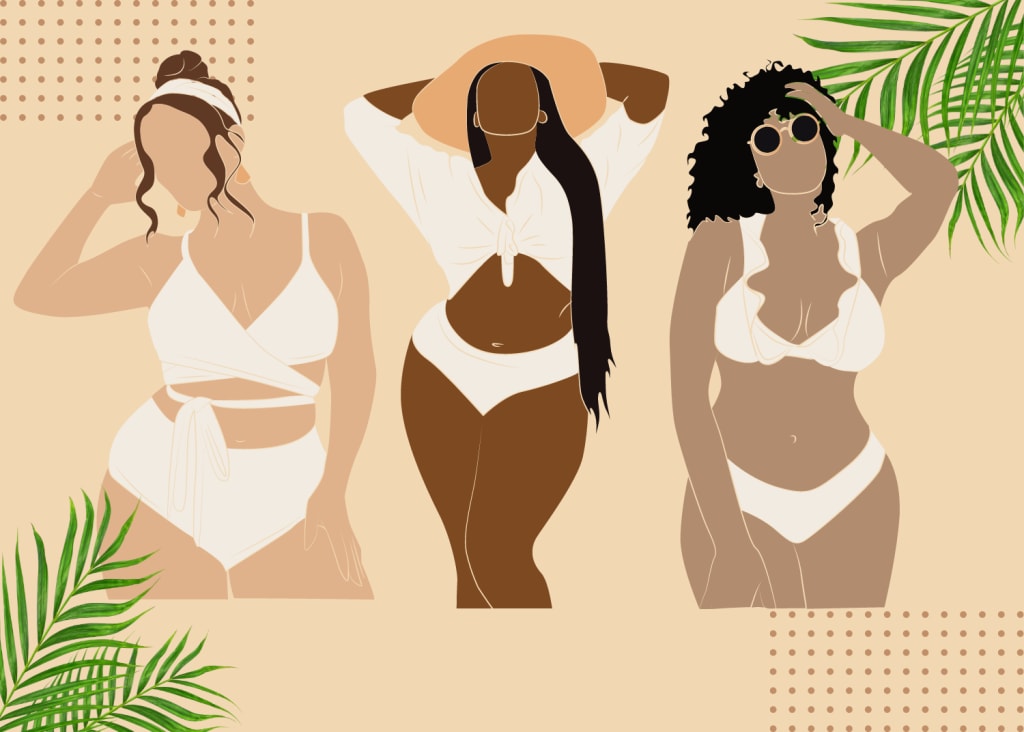Body Positivity
Embracing Diversity or Promoting Unhealthy Lifestyles?

Body positivity has become a prominent movement in recent years that promotes the acceptance and celebration of all body types. Essentially, it aims to challenge society's beauty standards and promote self-love regardless of size, shape or appearance. However, its noble intentions have raised questions about its possible consequences, especially in relation to the normalization of unhealthy behavior under the guise of acceptance. This article examines the complexity of the body positivity movement, its evolution, its impact on individuals and society, and the ongoing debate about its effectiveness and potential harm.
The Origins of Body Positivity
The roots of the body positive movement go back to the middle of the 20th century, when the first pioneers questioned the popular notions of beauty and thinness. Women like Marilyn Wann and Susie Orbach were among the first to champion body acceptance and resist society's pressure to conform to a narrow standard of attractiveness. Over time, the movement gained momentum, fueled by the rise of social media platforms that provided a forum for marginalized voices to be heard.
Body positivity gained widespread attention in the 2010s with hashtags like #BodyPositive and #EffYourBeautyStandards encouraging people to embrace their bodies without question. Influencers and celebrities began to promote body diversity by presenting images that defied traditional beauty standards and emphasized the importance of self-acceptance.
The Evolution of Body Positivity
As the body positive movement expanded, it evolved to include a wider range of identities and experiences. Intersectionality became a central thesis, recognizing that factors such as race, gender identity, disability, and socioeconomic status intersect with body image and self-esteem. Proponents emphasized the need for inclusion and acknowledged that ideals of beauty differ between cultures and communities.
In addition, body positivity has begun to extend beyond physical appearance to include mental and emotional well-being. Self-care practices such as mindfulness, therapy, and boundaries have been promoted as important components of self-love and acceptance. The movement emphasized prioritizing health and happiness over achieving an idealized body shape or size.
Criticism of the body positive movement
Despite its positive intentions, the body positive movement has received criticism from many sides. One of the main concerns is the movement's potential to inadvertently promote unhealthy behavior under the guise of acceptance. Critics argue that celebrating all body types without acknowledging the importance of health and wellness can lead to the normalization of obesity and other lifestyle diseases.
Additionally, some critics argue that the body positivity movement fails to address systemic issues, such as fatphobia, that perpetuate discrimination and stigmatization of larger bodies. They argue that true body acceptance requires challenging social structures that perpetuate appearance-based inequality and marginalization.
Others worry about the commercialization of body positivity, noting that brands profiting from the trend have co-opted it. Andquot;body positiveandquot; marketing campaigns and products have led to accusations of hypocrisy as companies promote self-love by maintaining unrealistic beauty standards in their advertisements.
In addition, the movement itself discusses the inclusion of certain bodies, especially those considered "acceptable" according to conventional standards. Some argue that the body positive movement co-opts people who meet conventional beauty standards and marginalizes those who do not. led to discussions about the need for greater diversity and representation in the movement.
Navigating the Complexities of Body Positivity
Among this criticism, body positivity recommends emphasizing the importance of nuance and inclusion. They argue that promoting self-acceptance is not about tolerating unhealthy behavior, but rather acknowledging that bodies come in different shapes, sizes and abilities. Proponents emphasize the need for a holistic approach to health that prioritizes mental, emotional and physical well-being without stigmatizing certain body types.
They further argue that the body positive movement is not a one-size-fits-all solution, but rather a starting point for a broader discussion about body image, self-esteem and social expectations. By challenging beauty standards and promoting self-acceptance, the movement opens a space for marginalized voices to be heard and for individuals to take control of their own bodies.
Moving Forward: Toward a Healthier Body Image
As the body positivity movement evolves, there is a growing consensus that a more nuanced approach that balances acceptance and responsibility is needed. This includes promoting health at all sizes, challenging fatphobia and discrimination, and promoting inclusive representation in media and advertising.
It is also recognized that education and awareness about body image must be raised, especially among young people. By fostering a culture of self-compassion and resilience, we can help people cope with societal pressures and develop healthy relationships with their bodies.
Finally, the purpose of the body positive movement is not to promote a certain body type or lifestyle, but to promote a culture of acceptance, respect and self-love. By embracing diversity and challenging beauty standards, we can create a world where all bodies are celebrated and valued for their inherent worth.
The body positive movement has sparked important conversations about beauty, self-esteem and inclusion. Although it has faced criticism and challenges, its impact on changing society's attitudes towards body image cannot be denied. By embracing inclusion and diversity, the movement has the potential to create a more inclusive and compassionate world for people of all shapes, sizes and identities. However, it is important to remain vigilant against the co-opting of body positivity for commercial gain and to continue to advocate for systemic change that addresses the root causes of body image issues. This is how we can move towards a future where body positivity is not just a slogan, but a lived reality for everyone.
.
About the Creator
yokesh kumar
An upcoming youngster in his 20's learning to explore and reach out to the minds of this worlds for advise and encouragement.
Enjoyed the story? Support the Creator.
Subscribe for free to receive all their stories in your feed. You could also pledge your support or give them a one-off tip, letting them know you appreciate their work.





Comments
There are no comments for this story
Be the first to respond and start the conversation.